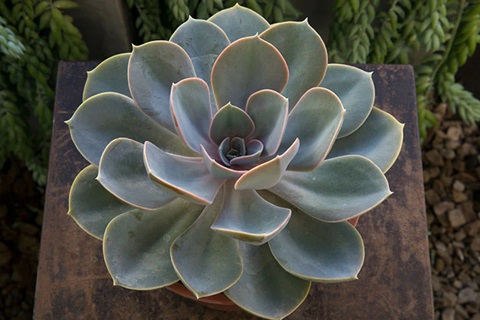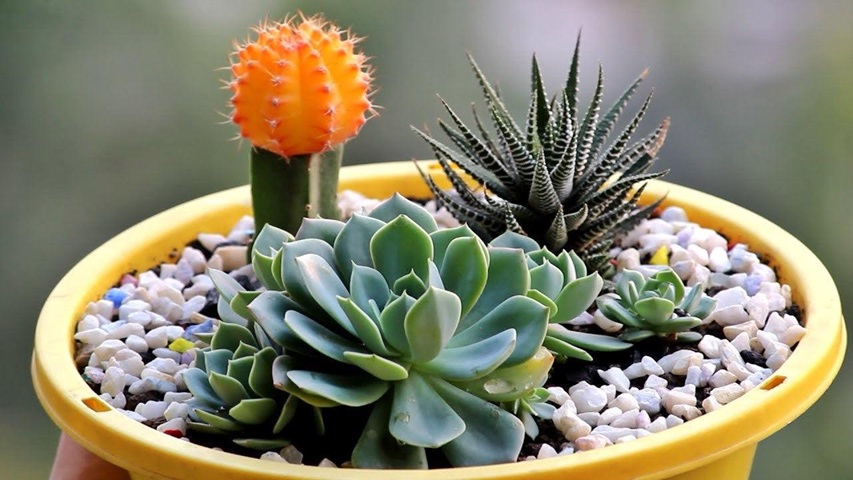Succulent plants are among the easiest and most attractive plants you can grow. They don’t need much care, survive in dry conditions, and come in many beautiful shapes and colors. Whether you want to keep them in your living room or grow them in your garden, succulents can be a great choice.
In this guide, you’ll learn all about succulent plants, how to care for them, different types, and some interesting facts.
Table of Contents
What Exactly Are Succulent Plants?
Succulent plants have thick, fleshy parts—usually leaves or stems—that hold water. This allows them to live in hot, dry environments, such as deserts. The word “succulent” comes from the Latin word “sucus,” which means juice or moisture.
These plants grow in many places around the world and have adapted to survive with very little water. That’s what makes them perfect for people who want low-maintenance greenery.
Why Succulents Are So Popular
There are many reasons why succulent plants are loved by both plant lovers and beginners:
- They need very little water
- They come in amazing shapes and colors
- They grow slowly, so they don’t need frequent trimming
- They can grow indoors and outdoors
- They add natural beauty to any room
Succulents are also a top choice for people with busy lives who still want to enjoy having plants.
Common Types of Succulent Plants
There are many kinds of succulents, each with a unique look. Here are some of the most loved types:
Aloe Vera
Aloe Vera has long, spiky leaves filled with healing gel. It’s often used for skin care and first-aid.
Echeveria
Echeveria plants grow in a flower-like shape and are often pink, blue, or soft green. They’re very popular in home decor.
Jade Plant
The Jade Plant has thick, oval-shaped leaves and a tree-like stem. Some believe it brings good luck and wealth.
Haworthia (Zebra Plant)
This small succulent has white stripes across its leaves, making it look like a zebra. It’s perfect for office desks or windowsills.
Sedum (Stonecrop)
Sedum plants are great for outdoor spaces and hanging planters. They’re tough and can survive in many conditions.
Basic Care Tips for Succulent Plants
Looking after succulents is simple, but a few key tips can help your plant stay healthy.
Light Needs
Succulents enjoy lots of sunlight. Place them near a bright window indoors, or in a sunny spot if outside. Most need at least 4–6 hours of sunlight each day.
If your succulent starts leaning or stretching, it may not be getting enough light.
Watering Rules
The number one rule with succulents is: don’t overwater them.
- Water only when the soil is completely dry
- Use the “soak and dry” method: give them a good drink, then let the soil dry before watering again
- In colder seasons, water even less
Tip: If the leaves are soft, yellow, or falling off, it might be a sign of too much water.
Best Soil
Succulents need soil that drains water fast. Regular potting soil keeps too much moisture. Use cactus or succulent potting mix, or make your own with:
- 2 parts potting soil
- 1 part sand
- 1 part perlite or pumice
Pot Selection
Choose pots that have holes at the bottom. This lets water drain out and prevents root rot.
Terracotta pots work well because they absorb extra moisture from the soil.
How to Grow More Succulents (Propagation)

One fun thing about succulents is that you can grow new ones from parts of the old plant. Here’s how:
Propagating From Leaves
- Gently twist off a healthy leaf
- Let it sit for 2–3 days to dry
- Place it on top of dry soil
- Spray with water every few days
- Roots and baby plants will start to grow in a few weeks
Propagating From Stems
- Cut a healthy stem using clean scissors
- Let the cut part dry out
- Plant the stem in soil
- Water lightly until it starts to root
Propagation is a great way to grow your collection or give plants to friends.
Common Problems and How to Solve Them
While succulents are easygoing, here are some issues you might face:
Overwatering
Signs: Yellow, mushy leaves or rotting roots
Fix: Cut back on watering and check that the pot drains well
Stretching (Etiolation)
Signs: Long stems and spaced-out leaves
Fix: Move the plant to a brighter area
Pests
Signs: White fluff (mealybugs) or small insects
Fix: Wipe with rubbing alcohol or use neem oil spray
Surprising Facts About Succulents
Want to impress your friends? Here are a few cool things about succulents:
- Some succulents can live up to 50 years
- They grow in almost every part of the world
- Succulents bloom with beautiful flowers when healthy
- They’re very trendy on social media platforms like Instagram
- Certain succulents clean the air in your home
Indoor vs Outdoor Succulents
Both indoor and outdoor succulents have their own benefits. Here’s how they compare:
Indoor Succulents
- Good for apartments and small spaces
- Less light, but more temperature control
- Popular choices: Zebra Plant, Snake Plant, Jade Plant
Outdoor Succulents
- Get more natural light
- Can grow bigger in gardens
- Good choices: Agave, Aloe Vera, Sedum
If you’re moving an indoor succulent outside, do it slowly to avoid sun damage.
Are Succulents Safe Around Pets?
Some succulents are non-toxic and safe for pets, but others can be harmful.
Safe for pets:
- Haworthia
- Echeveria
- Burro’s Tail
Harmful to pets:
- Aloe Vera
- Jade Plant
- Pencil Cactus
If you have pets at home, always check if the plant is pet-safe.
Creative Ways to Decorate With Succulents
Succulents aren’t just plants—they’re also lovely decor items. Here are some fun ideas:
DIY Succulent Bowls
Combine several mini succulents in a shallow bowl or tray for a cute display.
Glass Terrariums
Place small succulents inside a glass jar or bowl to create your own mini garden.
Wall Art
Use wooden frames or hanging planters to create living walls using succulents.
Event Decor
Mini succulents in pots make great gifts or centerpieces for weddings and parties.
Where to Buy Succulents
Succulents are available at garden centers, online stores, and even grocery stores. When buying one:
- Check for firm, healthy leaves
- Avoid plants with black spots or soggy soil
- Choose plants in well-draining soil
Tip: It’s better to buy smaller plants and watch them grow over time. They’re often cheaper and adapt better to new environments.
Final Thoughts
Succulent plants are more than just trendy—they’re practical, beautiful, and perfect for anyone who wants greenery without the hard work. With the right light, soil, and occasional watering, they’ll thrive indoors or out.










